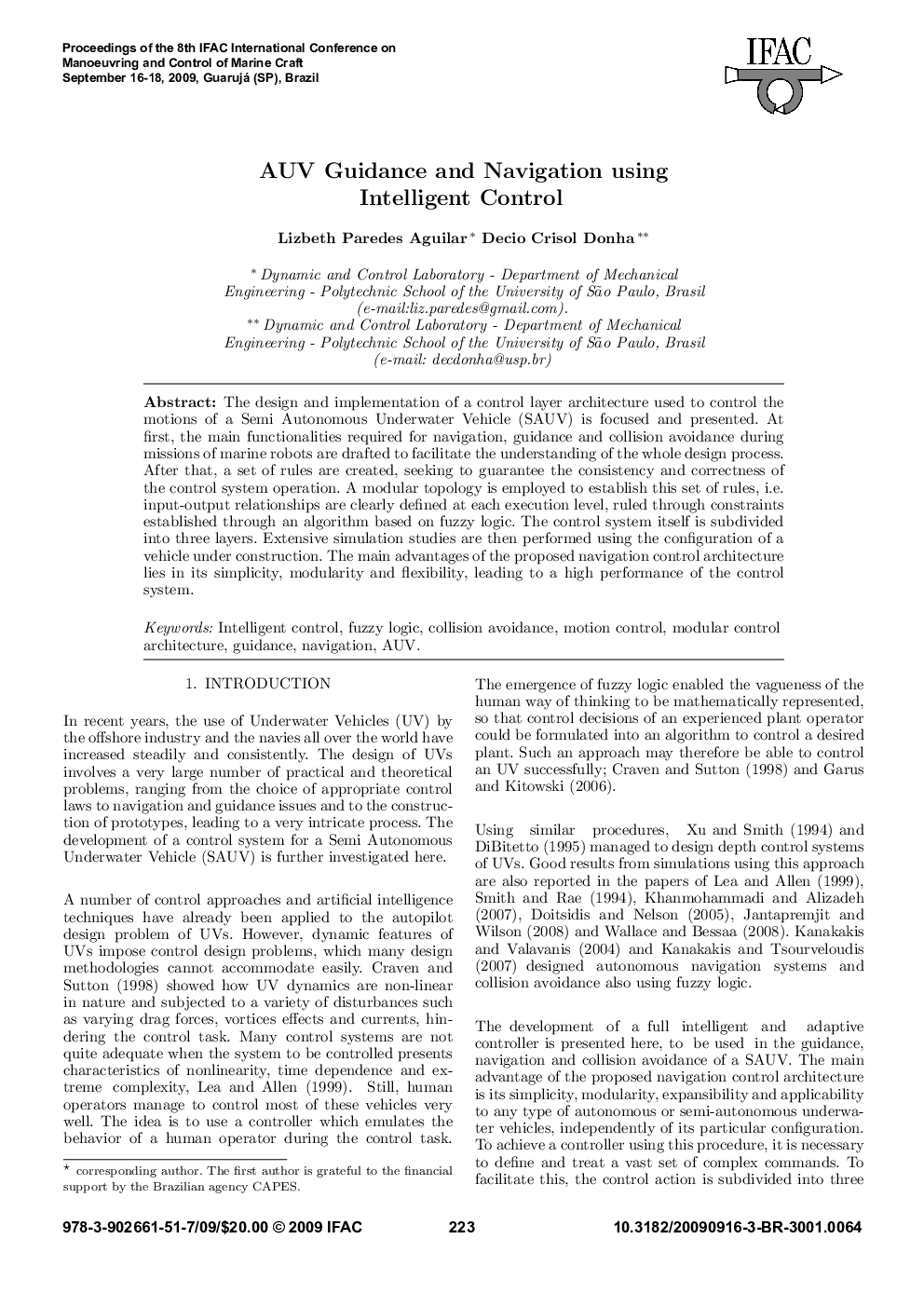| Article ID | Journal | Published Year | Pages | File Type |
|---|---|---|---|---|
| 710520 | IFAC Proceedings Volumes | 2009 | 6 Pages |
The design and implementation of a control layer architecture used to control the motions of a Semi Autonomous Underwater Vehicle (SAUV) is focused and presented. At first, the main functionalities required for navigation, guidance and collision avoidance during missions of marine robots are drafted to facilitate the understanding of the whole design process. After that, a set of rules are created, seeking to guarantee the consistency and correctness of the control system operation. A modular topology is employed to establish this set of rules, i.e. input-output relationships are clearly defined at each execution level, ruled through constraints established through an algorithm based on fuzzy logic. The control system itself is subdivided into three layers. Extensive simulation studies are then performed using the configuration of a vehicle under construction. The main advantages of the proposed navigation control architecture lies in its simplicity, modularity and flexibility, leading to a high performance of the control system.
